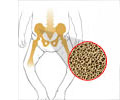People suffering from severe chronic anemias and those with beta-thalassemia need frequent blood transfusions to remain healthy.
People suffering from severe chronic anemias and those with beta-thalassemia need frequent blood transfusions to remain healthy. But the problem they frequently encounter is that due to transfusions there is an increase in the iron content in the body. This results in heart and liver failure.
The traditional treatment to remove excess iron is a time consuming process. Hence researchers studied deferasirox which is a new drug to treat patients suffering from chronic iron overload. The results of the study would be published in the month of May in the journal Blood. As of now the therapy to remove excess iron from the body is deferoxamine. This is administered for as long as the patient continues to receive blood transfusions, which, for many patients, can be for the rest of their lives. But the drug is very effective and safe.The only drawback is that the drug has to be delivered by slow subcutaneous or intravenous infusion for eight to 12 hours a night over a period of five to seven days. On the other hand deferasirox is available in a once-daily, drinkable format, providing a promising alternative. Maria Domenica Cappellini, MD, of the University of Milan, Italy, and lead study author said that this reduces the strain on those patients especially children who require frequent blood transfusions help them to lead a normal and healthy life. She and her colleagues compared the efficacy and safety of the two drugs. Both children and adults participated in the study were diagnosed with chronic iron overload. People with beta-thalassemia, an inherited blood disorder, were selected for this study because complications of chronic iron overload have been best studied in those with this disease.
All participants continued receiving regular blood transfusions to treat beta-thalassemia throughout the year-long study. Participants were divided into two groups. In one group 290 patients received deferoxamine infusions five days a week and in the second group 296 patients drank deferasirox dissolved in water each day before breakfast. Drug dosages were determined by each patient's liver iron concentration (LIC) level. The primary goal of the trial was to reduce LIC levels in those with high values and maintain LIC levels in those with low values. In the end of the study Deferasirox proved to be equally as effective as deferoxamine in patients receiving the highest doses of the drug. Deferasirox was generally well-tolerated with mild and common side effects such as skin rash and gastrointestional problems (abdominal pain, vomiting, diarrhea, and constipation).









